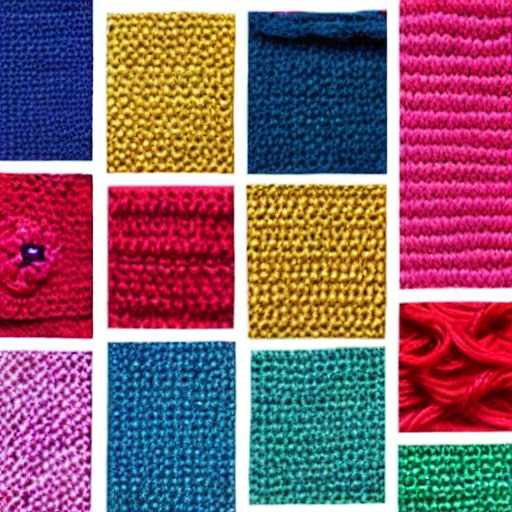In the realm of knitting and crocheting, color selection is an art form that can elevate your projects from ordinary to extraordinary. The careful interplay of colors can enhance patterns, showcase textures, and evoke emotions. In this comprehensive blog post, we’ll delve deep into the world of color theory in knitting and crocheting. From understanding the science behind color harmony to practical tips for choosing the perfect color schemes, we’ll unlock the secrets to creating visually captivating and harmonious fiber art. Join us on this colorful journey and learn how to wield the power of colors to transform your creations into timeless masterpieces.
Section 1: The Foundations of Color Theory
The Basics of Color
Before delving into color theory, it’s essential to grasp the basics of color itself. Colors are categorized into three primary hues: red, blue, and yellow, from which all other colors are derived. Understanding the color wheel, with its various shades, tints, and tones, forms the foundation for effective color selection.
The Psychology of Color
Color has a profound impact on human psychology and emotions. Warm colors, such as reds and oranges, evoke feelings of energy and excitement, while cool colors like blues and greens elicit calmness and tranquility. In this post we explore how to harness the emotional power of colors to create knitting and crocheting projects with specific moods and atmospheres.
Section 2: Utilizing Color Theory in Fiber Art
Color Harmonies
Understanding color harmonies is vital for achieving a visually appealing and cohesive design. We’ll explore various color schemes, such as complementary, analogous, monochromatic, and triadic, and examine how they can be applied to knitting and crocheting projects in a future post.
The Impact of Contrast
Contrast is a powerful tool in color selection. High contrast can create dynamic and eye-catching designs, while low contrast imparts a subtle and sophisticated look. In a future post, I will delve into the importance of contrast and demonstrate how it can elevate your fiber art.
Balancing Color Intensity
Color intensity, or saturation, plays a significant role in the overall aesthetics of your project. In a future post, I’ll explore how to balance colors with different intensities to prevent overwhelming or dull effects. Additionally, we’ll discuss the strategic use of neutral colors to provide balance and emphasis.
Section 3: Practical Tips for Color Selection
Understanding Your Palette
Consider the project’s purpose and the audience’s preferences when selecting colors. Whether you’re crafting a baby blanket, a winter scarf, or a vibrant shawl, understanding the palette that best suits your objective is crucial.
Swatching and Color Mock-ups
Creating swatches or color mock-ups allows you to visualize how your chosen colors interact. This step is invaluable in avoiding undesirable outcomes and helps you make informed decisions before committing to your project.
Personalizing Your Fiber Art
Embrace your creativity and infuse your projects with your personal touch. Use colors that resonate with your artistic vision and reflect your unique style, making your work stand out with authenticity.
Section 4: The Influence of Seasonal Colors
Adapting to Seasons
Different seasons evoke specific emotions and moods. In a future post I will explore how to select colors that align with the essence of each season, allowing you to create knitting and crocheting projects that embrace the spirit of spring, summer, fall, and winter.
Trends and Color Forecasting
Stay ahead of the curve by understanding color trends and forecasts in the world of fiber art. We’ll discuss how to incorporate trendy colors into your designs while maintaining a timeless appeal in a future post.
In the realm of knitting and crocheting, color selection is an art that requires both understanding and intuition. By harnessing the power of color theory, you can transform your projects into captivating and harmonious creations that stand the test of time. Remember to consider the emotions and moods you wish to evoke, apply the principles of color harmonies and contrast, and embrace your personal creativity. Armed with this comprehensive knowledge, you are now equipped to embark on a colorful journey of fiber art that will leave a lasting impression on both you and those who admire your magnificent creations. Happy stitching!
